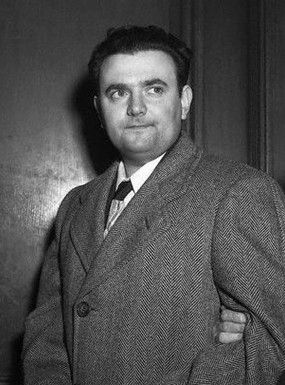Today, the New York Times confirmed the death of David Greenglass, the notorious Army sergeant who stole atomic secrets from Los Alamos during the Manhattan Project.
Though Greenglass died on July 1, 2014 at the age of 92, his family did not announce his death. The Times learned of it after a call to the nursing home where he had been living under an assumed name.
When the Army drafted Greenglass during World War II, he was placed in the Special Engineer Detachment (SED), an Army program designed to tap into the vast pool of draftees possessing scientific and technical backgrounds. Greenglass’ skills as a machinist led to his assignment in 1944 to the Manhattan Project at Los Alamos, where some of the world’s leading physicists were developing America’s first atomic bomb. After lying on his security clearance report, Greenglass was assigned to a group making precision molds for the high-explosive lenses used to detonate the plutonium core.
“David Greenglass was very political,” recalls Benjamin Bederson, a fellow SED who slept in the bunk at Los Alamos next to Greenglass. “He was always talking about Russia and how wonderful Russia was.”
William Spindel, a fellow SED at Los Alamos, recalled Greenglass’ unusual behavior. “He actually tried to get me to serve as a spy,” said Spindel. “The line then was, ‘Don’t you think it’s not fair of us not to share this with our great Russian allies? They’re fighting for us, why aren’t we sharing this information?’”
Others were less suspicious. “Greenglass was just a Brooklyn kid,” said Lilli Hornig, a chemist who worked in the Explosives Division at Los Alamos. “He was a lot like Ben Bederson, you know, irreverent and fresh.”
When Julius Rosenberg, already a Soviet spy, learned that his brother-in-law had been placed at Los Alamos, he recruited him. In the middle of 1945, Greenglass sent Rosenberg a crude sketch and twelve pages of detailed notes on the implosion-type atomic bomb.
In 1950, Greenglass was arrested and charged with espionage after being implicated by Klaus Fuchs, a physicist and a Soviet spy who had worked at Los Alamos, and Harry Gold, a courier for the Soviets. In exchange for testimony against Julius and Ethel Rosenberg, Greenglass was sentenced to fifteen years. He was released in 1960 and rejoined his wife in New York, where he lived under an assumed name until his death in July.





